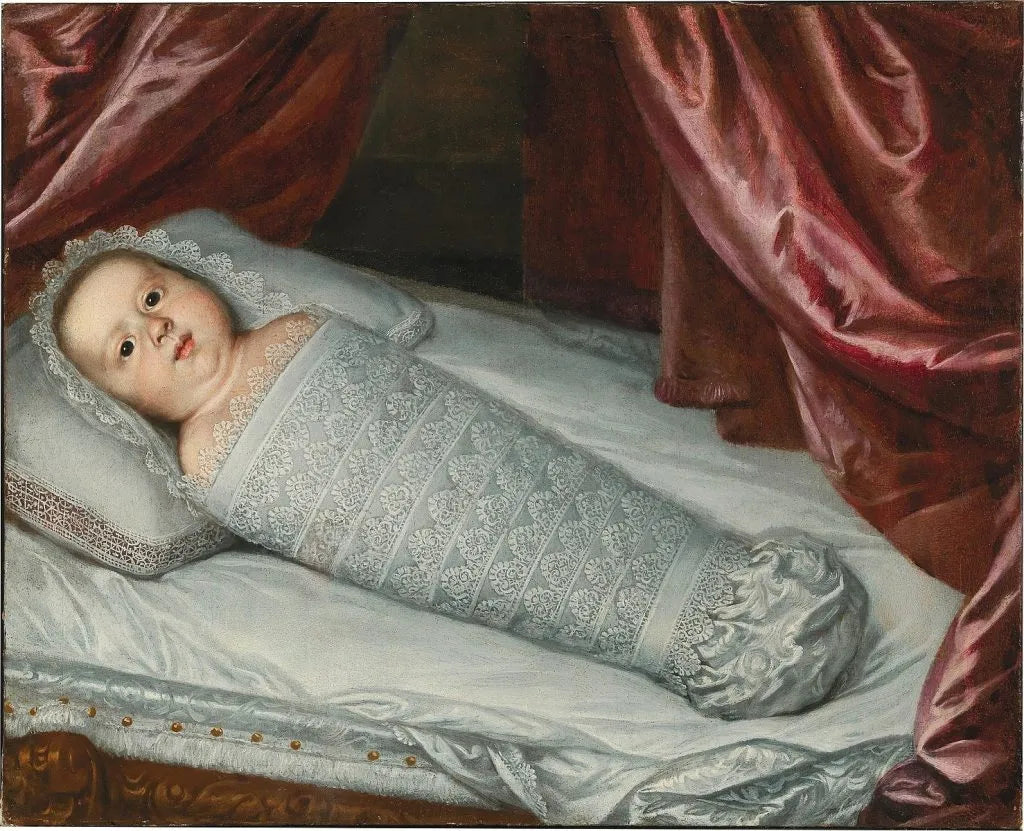During the medieval era, artists often depicted babies with adult characteristics such as receding hairlines, full eyebrows, and fully-toned torsos. Artists did this to elevate baby Jesus’s holiness in an attempt to make out as if his divinity began at birth, doing away with many soft infant features to replace infant innocence with almighty wisdom. Through a modern lens, he looks like a full-time daycare attendee who dabbles in Crypto during his pastime.
As studies of light and detail increased during the Renaissance, so did facial expressions. Animals such as cats, who symbolized mischief and malice and were no longer depicted in earlier paintings within cathedrals and manuscripts, reflected the reality of emotion and character in humans. Emotions were no longer cast out from canvasses, elevated only by figures symbolizing ungodliness. Now, a pissed-off baby and a happy mother can share the same space and be celebrated. The Renaissance era celebrated the human psyche by elevating emotion in frescos instead of suppressing them in the soul to follow the trends of medieval times.

One common trend in Renaissance-era painting of infants is their apparent hatred for birds. Whether they were tightly gripping them with their grubby hands or being taken away by the Lord of the Rings style, these babies were tired of being around birds.
My sister was once attacked by a vulture when she was little on her way to school, so she was the first person I thought of when I saw this one. The work refers to the Myth of Ganymede, a person described by Homer as one of the most beautiful mortals to ever exist. Zeus. Even still, surface-level imagery can still support the case that Renaissance painters loved painting babies that hated birds. Ganymede Abducted by the Eagle, a painting by Antonio da Correggio, emphasizes that while Ganymede may have been described as a mortal of extreme beauty, he also became a study for raw anguish. This baby is not having it and is kicking and screaming all the way up to Mount Olympus, soiling the ground with his urine all the way up, taking a whole new meaning to “pissed off.” I’d feel the same if I was kidnapped to hold some old guy’s cup for eternity. Once again, the piece needed context for the illustration to make sense, but without knowledge of the ancient tale we are still left with an all-too-relatable baby.
Fascination with Greek Mythology continued as a trend throughout the Renaissance period, taking inspiration from both Greek and Roman tales. Far before the macabre depiction left behind by Fransisco Goya in his home, João de Mascarenhas commissioned many artists to sculpt the tale centuries before for the gardens of the Palace Fronteira. The story, as we all know, revolves around the titan Cronos eating his children in an attempt to prevent the prophecy of his progeny from overthrowing him.

In ancient Greek mythology, the story is meant to represent the desperation for survival and the corruption that comes with power. Looking at the expressions today, however, Cronos’s kid seems inconvenienced at best by the whole cheat-fate ordeal of eating his kids, the father and child appearing more nonchalant than desperate. Oh, to read the mind of that baby… he’s probably thinking, “Really? Now you’re second-guessing? Do you need some Zack’s Sauce or something?”
Towards the end of the Renaissance, Guido Reni had a vision, leading to the creation of his painting Cupids Fighting PuttiThe painting was inspired by Reni’s constant squabbles with the Pope’s treasurer. While working on a piece for the Quirinal Place, a space in Rome, Reni fled without notifying the Pope as rumors circulated about his arrogance and lackadaisical manner when approaching projects, leaving the piece unfinished. A Cardinal approached him soon after on the Pope’s behalf to get him to complete his work, but Reni refused. In response, the cardinal took great offense and tried to have him imprisoned. However, a friend not only bailed him out but convinced the two to make amends so his fresco could be completed.
As a sign of gratitude, Reni painted Cupids Fighting Putti to the friend as a gift, representing the arguments he faced with the squabbles between Cupids and Putti. Here, Reni celebrates the human condition of conflict and resolution, drawing on his most recent experiences. Without this historical context, however, we are left with a baby fight club, two infant figures meant to symbolize purity, peace, and love throwing left hooks like someone insulted their mama. If God tried to call for peace, they’d sent him to voice mail and decided to ask for forgiveness instead of permission. What better way to exemplify the celebration of the human condition than with a cherub baby fight club?
©ArtRKL™️ LLC 2021-2023. All rights reserved. This material may not be published, broadcast, rewritten or redistributed. ArtRKL™️ and its underscore design indicate trademarks of ArtRKL™️ LLC and its subsidiaries.





